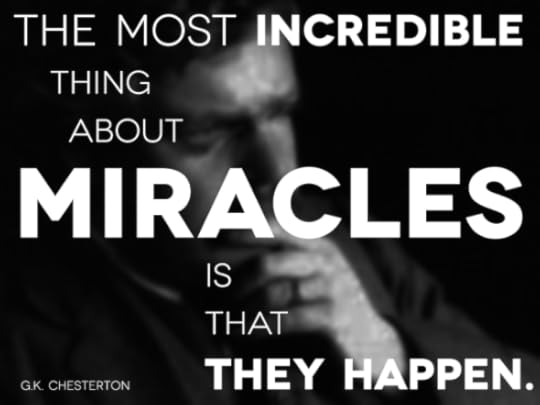The Pentecostal Materialist: Provisional thoughts on the Meaning(lessness) of Signs and Wonders
“Every ‘miracle’… becomes the manifestation of the inexistence of God”
Quentin Meillassoux
In the debate about miracles there are generally two clear opposing lines: those who argue for their existence and those who argue against their existence (with various forms of weak and strong agnosticism in the middle). What these positions take for granted is the idea that a miracle would be evidence of some divine source.
Into this popular debate the philosopher Quentin Meillassoux makes an initially startling and even ridiculous claim (which is how novel ideas almost always sound to us), namely that miracles do occur, and that they point towards the inexistence of a divine source (as classically understood in theistic traditions).
The argument in brief is that truly novel events do occur in the universe, events that are not the result of a simple chain of cause and effect (his examples are: being out of nothing, life out of being, thought out of life) and that these reveal to us the ultimately contingent and chaotic nature of the universe in-itself. In more arcane and unpopular existential terms, a miracle is a glimpse into absurdity or the abyss.
Strange as the argument might sound, this materialist defense of miracles has a certain continuity with a reading of signs and wonders that I have been developing recently (inspired by the book Christ and the End of Meaning by Paul Hessert).
Basically the traditional battle lines on the subject of signs and wonders are between those who believe that they exist and those who don’t (again with agnostic positions in the middle). In the former it is argued that a universe without divine agency would lack signs and wonders, hence their existence points toward divine agency, while in the latter it is argued that the human brain is a meaning making system that finds patterns and correlations were none actually exist.
In one signs and wonders exist ‘out there,’ while in the other they are a type of projection of the human mind onto an ultimately indifferent world of brute being.
It is the work of Paul that renders problematic these simple categories, for it is well known that he wrote against signs and wonders, arguing that ‘Christ Crucified’ was foolishness to one and a stumbling block to the other. In other words, crucifixion is the breaking apart of signs and wonders because it signals divine curse and abandonment.
Signs and wonders traditionally point to divine love, order and justice (even if they are destructive) so the crucifixion of Christ could not, from the traditional standpoint of signs and wonders, be seen as anything but absurd (hence Paul’s claim).
So the notion of signs and wonders, Christologically speaking, is broken apart by the central event of Christianity.
Yet in the midst of all this, ‘Christ Crucified’ is itself a strange, radical sign. It is a type of ‘sign and wonder’ that breaks open the very meaning of signs and wonders and renders them foolishness.
These are only very basic notes to a future book, but it seems to me that this opens up a new type of, for want of a better word, religious being: the materialist mystic, or the Pentecostal materialist.
This would be one who believes that signs and wonders really do exist (rather than being merely a reflection of the human mind as an order making structure), but that they reflect the nature of the universe itself as an utterly immanent order making structure without ground. In short, that there are signs and wonders in the universe itself, but these manifest the ultimate contingency and chaos of the universe in-itself.
Like all my work, this is not some detached speculation, but an honest attempt to reflect upon my own experience of signs and wonders in my own life.
Peter Rollins's Blog
- Peter Rollins's profile
- 314 followers




